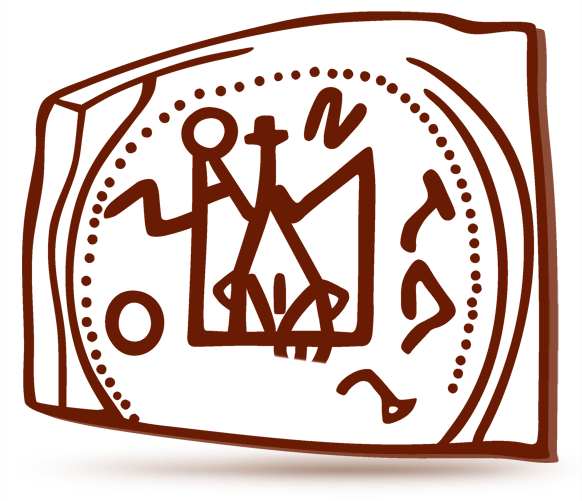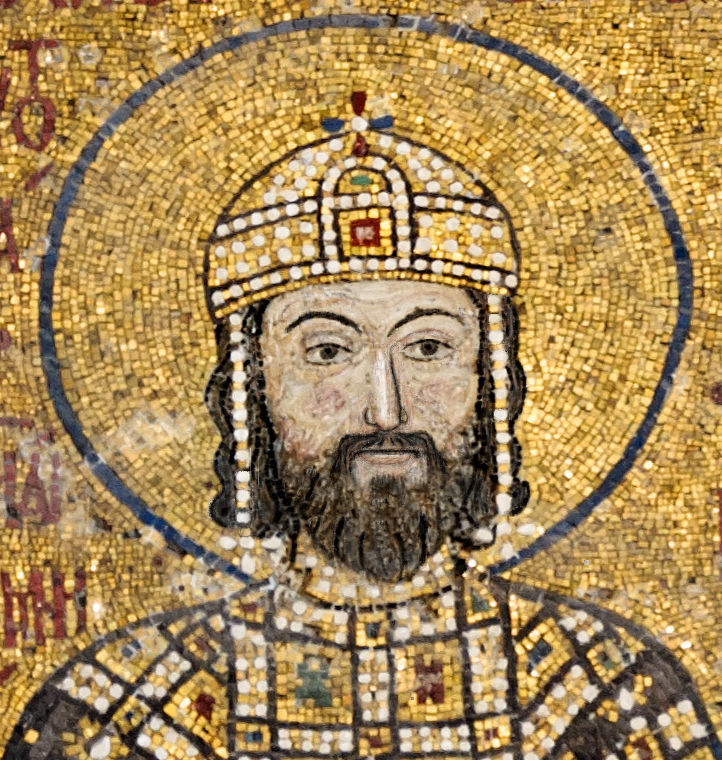|
Principality Of Vitebsk
The Principality of Vitebsk ( be, Віцебскае княства) was a Ruthenian principality centered on the city of Vitebsk in modern Belarus, that existed from its founding in 1101 until it was inherited into the Grand Duchy of Lithuania in 1320, and only nominally until 1508. History The area around Vitebsk was controlled by the principality of Polotsk beginning from the 10th century. Following the death of Vseslav of Polotsk in 1101, Polotsk was divided into Principality of Polotsk#Decline, six smaller principalities each to be inherited by one of his six surviving sons. Vseslav's second born son, Sviatoslav Vseslavich inherited the lands surrounding Vitebsk and started the Vitebsk branch of the Prince of Polotsk, princes of Polotsk. In 1106, Sviatoslav had partaken in a raid against the Baltic tribes in Semigallia with his brothers. In 1127, the prince of Kiev, Mstislav I of Kiev, Mstislav Vladimirovich, began a war with the Prince of Polotsk, princes of Polotsk over ... [...More Info...] [...Related Items...] OR: [Wikipedia] [Google] [Baidu] |
Iziaslav Of Polock Seal Avers , several people
Iziaslav may refer to: * Iziaslav, Ukraine, a city * Iziaslav Raion, a former raion in Khmelnytskyi Oblast in Ukraine * Iziaslav IV Vladimirovich (born 1186) * Iziaslav (Brutskiy) (1926–2007), primate of the Belarusian Autocephalous Orthodox Church * Iziaslav of Kiev (other) Iziaslav of Kiev may refer to: * Iziaslav I of Kiev (1024–1078), patronymic Yaroslavich * Iziaslav II of Kiev Iziaslav II Mstislavich ( uk, Ізяслав Мстиславич, russian: Изяслав II Мстиславич; c. 1096 See also * Iziaslav Vladimirovich (other) {{disambiguation, geo ...[...More Info...] [...Related Items...] OR: [Wikipedia] [Google] [Baidu] |
Rogvolod Vseslavich
Rogvolod Vseslavich, baptismal name Boris, was the Prince of Drutsk and Polotsk. He was the son of Vseslav of Polotsk, Grand Prince of Rus. Rogvolod probably was named in honor of his ancestor Rogvolod. Some historians, including Mikhail Pogodin, believe that Rogvolod-Boris are two different princes. It is also not clear whether or not Rogvolod was the older brother of Davyd and Gleb. However, if he was given the Principality of Drutsk it, probably, corresponds to the ''line of succession'' which presumably made him second in that line. It also possible that he was the Prince of Polotsk right after his father's death, but that account is rebutted by another fact which is supported by some Slavic chronicles that call Davyd Vseslavich as the leader of the Polotsk armed forces and possibly the main successor of the Polotsk throne. According to Vasily Tatishchev, Rogvolod has found the city of Barysaw in 1102,Mykhailo Hrushevsky. ''History of Ukraine-Rus''. Vol.2. Kiev 1992 hence are ... [...More Info...] [...Related Items...] OR: [Wikipedia] [Google] [Baidu] |
Principality Of Chernigov
The Principality of Chernigov ( orv, Чєрниговскоє кънѧжьство; uk, Чернігівське князівство; russian: Черниговское княжество) was one of the largest and most powerful states within Kievan Rus'. For a time the principality was the second most powerful after Kiev. The principality was formed in the 10th century and maintained some of its distinctiveness until the 16th century. The Principality of Chernigov consisted of regions of modern day Ukraine, Belarus, and Russia. Location Most of the Principality of Chernigov was located on the left bank of the river Dnieper, within the basins of the Desna and Seim rivers. The principality was supposedly populated by mostly Slavic tribes of Siverians and partially by the Dnieper Polans. Later the territory of the principality extended to the lands of the Radimichs and partially the Vyatichs and Drehovichs. The capital of the principality was the city of Chernigov, the other ... [...More Info...] [...Related Items...] OR: [Wikipedia] [Google] [Baidu] |
Riga
Riga (; lv, Rīga , liv, Rīgõ) is the capital and largest city of Latvia and is home to 605,802 inhabitants which is a third of Latvia's population. The city lies on the Gulf of Riga at the mouth of the Daugava river where it meets the Baltic Sea. Riga's territory covers and lies above sea level, on a flat and sandy plain. Riga was founded in 1201 and is a former Hanseatic League member. Riga's historical centre is a UNESCO World Heritage Site, noted for its Art Nouveau/Jugendstil architecture and 19th century wooden architecture. Riga was the European Capital of Culture in 2014, along with Umeå in Sweden. Riga hosted the 2006 NATO Summit, the Eurovision Song Contest 2003, the 2006 IIHF Men's World Ice Hockey Championships, 2013 World Women's Curling Championship and the 2021 IIHF World Championship. It is home to the European Union's office of European Regulators for Electronic Communications (BEREC). In 2017, it was named the European Region of Gastronomy. I ... [...More Info...] [...Related Items...] OR: [Wikipedia] [Google] [Baidu] |
Principality Of Smolensk
The Principality of Smolensk (eventually Grand Principality of Smolensk) was a Kievan Rus' lordship from the 11th to the 16th century. Until 1127, when it passed to Rostislav Mstislavich, the principality was part of the land of Kiev. The principality gradually came under Lithuanian influence and was incorporated into the Grand Duchy of Lithuania in 1404. The principality was reorganized into the Smolensk Voivodeship in 1508. The Grand Duchy of Moscow controlled the city from 1514 to 1611, then it was recaptured by the Polish–Lithuanian Commonwealth. Tsardom of Russia recaptured the city in 1654. History Descendants of Grand Prince Iaroslav I of Kiev (died 1054) ruled the principality until 1125. Following the death of Vladimir Monomakh, Grand Prince of Kievan Rus', Vladimir's son Mstislav I Vladimirovich became the Rus' over-king and Mstislav's own son Rostislav Mstislavich became Prince of Smolensk (ruled 1125–1160). The principality gained its own Orthodox bishopric under ... [...More Info...] [...Related Items...] OR: [Wikipedia] [Google] [Baidu] |
Principality Of Drutsk
The Duchy of Drutsk ( be, Княства Друцкае) was a small appanage principality of the Polotsk principality and was centred in Drutsk. It was located on a three way stick between Vitebsk, Minsk and Mogilev regions in modern Belarus. The appanage duchy of Drutsk was established after the death of Vseslav, the Prince of Polotsk, in 1101 and the division of the Polatsk territory between Vseslav's sons. Drutsk was given to Rogvolod-Boris. Soon its territory was taken over by another appanage duchy of Polotsk, Duchy of Minsk governed by Gleb Vseslavich. In 1116, the duchy of Drutsk was taken over by the Grand Duchy of Kiev governed by Volodymyr Monomakh, but by 1150s it was returned to Duchy of Minsk. Eventually Drutsk was entirely taken over by the Principality of Minsk in the second half of the 13th century and in early 14th century by another appanage duchy of Polotsk, Principality of Vitebsk. It is believed that Algirdas, Grand Duke of Lithuania, acquired the Duchy ... [...More Info...] [...Related Items...] OR: [Wikipedia] [Google] [Baidu] |
Principality Of Minsk
The Principality of Minsk was an appanage principality of the Duchy of Polotsk and centered on the city of Minsk (today in Belarus). It existed from its founding in 1101 until it was annexed by the Grand Duchy of Lithuania in 1242, and only nominally until 1326. Geography The principality originally occupied territories around the Drut, Svislach and Berezina river basins. Besides the capital city of Minsk, other population centers in the principality included Barysaw, Lahojsk, Zaslawye, Orsha and the historical town of Drutsk. History The area around Minsk was controlled by the principality of Polotsk beginning from the 10th century. Following the death of Vseslav of Polotsk in 1101, Polotsk was divided into six smaller principalities each to be inherited by one of his six surviving sons. Vseslav's second born son, Gleb Vseslavich inherited the lands surrounding Minsk and started the Minsk branch of the princes of Polotsk. Almost immediately following his father's deat ... [...More Info...] [...Related Items...] OR: [Wikipedia] [Google] [Baidu] |
Vseslav Vasilkovich
Vseslav of Polotsk or Vseslav Bryachislavich ( 1029 – 24 April 1101), also known as ''Vseslav the Sorcerer'' or ''Vseslav the Seer'', was the most famous ruler of Polotsk and was briefly Grand Prince of Kiev in 1068–1069. Together with Rostislav Vladimirovich and voivode Vyshata, they created a coalition against the Yaroslaviches' triumvirate. Polotsk's Cathedral of Holy Wisdom (completed in 1066) is one of the most enduring monuments on the lands of modern Belarus and dates to his 57-year reign. Biography Vselav was the son of Bryachislav Izyaslavich, Prince of Polotsk and Vitebsk, and was thus the great-grandson of Vladimir I of Kiev and Rogneda of Polotsk. He was born in c. 1029-1030 in Polotsk (with Vasilii as his baptismal name) and married around 1060. He took the throne of Polotsk in 1044 upon his father's death, and although since 1093 he was the senior member of the Rurik Dynasty for his generation, since his father had not been prince in Kiev, Vseslav was exclude ... [...More Info...] [...Related Items...] OR: [Wikipedia] [Google] [Baidu] |
John II Komnenos
John II Komnenos or Comnenus ( gr, Ἱωάννης ὁ Κομνηνός, Iōannēs ho Komnēnos; 13 September 1087 – 8 April 1143) was Byzantine emperor from 1118 to 1143. Also known as "John the Beautiful" or "John the Good" (), he was the eldest son of Emperor Alexios I Komnenos and Irene Doukaina and the second emperor to rule during the Komnenian restoration of the Byzantine Empire. As he was born to a reigning emperor, he had the status of a . John was a pious and dedicated monarch who was determined to undo the damage his empire had suffered following the Battle of Manzikert, half a century earlier. John has been assessed as the greatest of the Komnenian emperors. In the course of the quarter-century of his reign, John made alliances with the Holy Roman Empire in the west, decisively defeated the Pechenegs, Hungarians and Serbs in the Balkans, and personally led numerous campaigns against the Turks in Asia Minor. John's campaigns fundamentally changed th ... [...More Info...] [...Related Items...] OR: [Wikipedia] [Google] [Baidu] |
Vasilko Sviatoslavich
Vasilko is a Ruthenian variation of the Greek name Vassilios, English: Basil). Notable people with the name include: *Prince Vasilko Romanovich (1203–1269) *Prince Vasilko Rostislavich ( 1066–1124) *Prince Vasilko Konstantinovich Vasilko Konstantinovich (russian: Василько Константинович; 7 December 1209, in Rostov – 4 March 1238, in Sherensky forest) was the first Prince of Rostov. He was the son of Konstantin of Rostov, and the spouse of Maria ... (1209–1238) {{given name Masculine given names ... [...More Info...] [...Related Items...] OR: [Wikipedia] [Google] [Baidu] |
Constantinople
la, Constantinopolis ota, قسطنطينيه , alternate_name = Byzantion (earlier Greek name), Nova Roma ("New Rome"), Miklagard/Miklagarth (Old Norse), Tsargrad ( Slavic), Qustantiniya (Arabic), Basileuousa ("Queen of Cities"), Megalopolis ("the Great City"), Πόλις ("the City"), Kostantiniyye or Konstantinopolis ( Turkish) , image = Byzantine Constantinople-en.png , alt = , caption = Map of Constantinople in the Byzantine period, corresponding to the modern-day Fatih district of Istanbul , map_type = Istanbul#Turkey Marmara#Turkey , map_alt = A map of Byzantine Istanbul. , map_size = 275 , map_caption = Constantinople was founded on the former site of the Greek colony of Byzantion, which today is known as Istanbul in Turkey. , coordinates = , location = Fatih, İstanbul, Turkey , region = Marmara Region , type = Imperial city , part_of = , length = , width ... [...More Info...] [...Related Items...] OR: [Wikipedia] [Google] [Baidu] |
.png)


